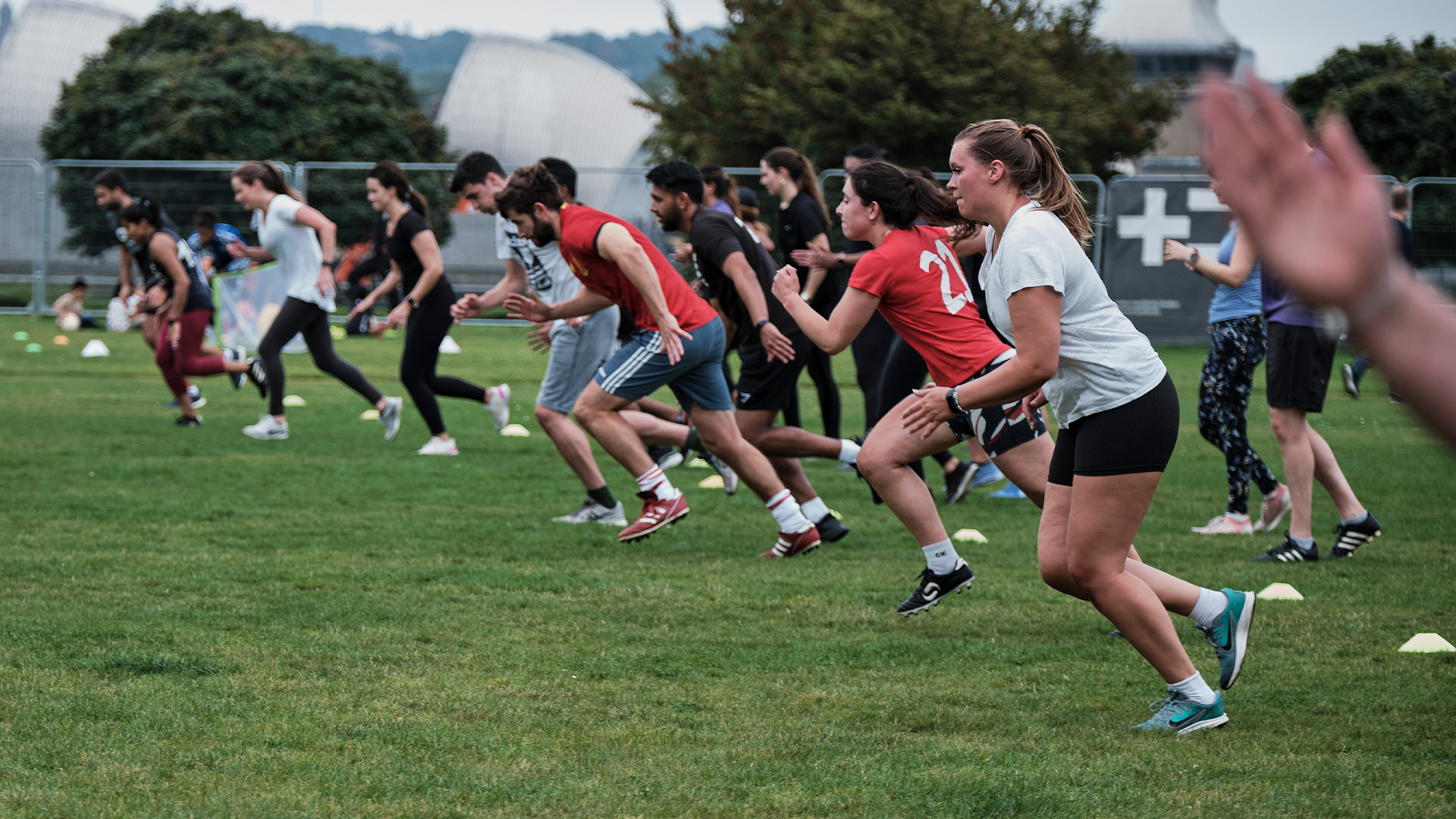Building Positive Habits: Harnessing Group Fitness for Lasting Change
They say it takes 66 days to build a positive habit, but in truth, there are a few hacks we can use to accelerate this process and make these habits much easier to achieve. One of the most effective ways to do this is by creating an environment that promotes good habits while reducing the risk of bad ones. In this blog, we’ll explore the power of group fitness, social fitness, and community in helping you build and sustain positive habits, drawing inspiration from concepts discussed in books like “Atomic Habits” by James Clear and “The Happiness Hypothesis” by Jonathan Haidt.
The Rider and the Elephant: A Metaphor for the Brain
To understand how our brains work when it comes to habit formation, let’s dive into a metaphor that has been used throughout history, from Buddhism to Freud and more recently, in the “Chimp Paradox” by Professor Steve Peters. This metaphor is the Rider and the Elephant, a concept also discussed in “The Happiness Hypothesis” by Jonathan Haidt.
In this analogy, the brain is divided into two parts: the Elephant and the Rider. The Elephant represents the older, more primal part of our brain—the midbrain or the chimp brain. It has evolved over millions of years and is extraordinarily powerful, driven by impulses and emotions. On the other hand, the Rider represents the newer, more rational part of our brain, which tries to control the Elephant’s impulses.
Building positive habits is, in essence, about controlling the Elephant. It’s about creating an environment that allows the Elephant to move along the path the Rider decides upon, a concept that aligns with the principles discussed in “Atomic Habits” by James Clear.
Fitness Training for the Elephant: The Power of Group Fitness
At the beginning of your habit-building journey, it might be challenging to believe that you can gain control over your Elephant. But with the right approach, you can condition your midbrain or chimp to lead you toward enduring positive habits, as suggested by James Clear in “Atomic Habits.”
This is where group fitness comes into play. Imagine your fitness routine as a training ground for the Elephant. Initially, it may feel like a struggle for the Rider to convince the Elephant to exercise regularly and make healthier choices. However, by participating in group fitness activities, you create an environment that makes this process significantly easier, a concept that James Clear explores in his book.
The Benefits of Group Fitness:

Accountability
When you commit to group fitness classes, you’re less likely to skip workouts. The sense of accountability to the group and the instructor motivates you to show up consistently, a principle discussed in “Atomic Habits.”

Social Connection
Group fitness fosters social fitness, as emphasised by Jonathan Haidt in “The Happiness Hypothesis.” You’re not alone in your journey. Surrounding yourself with like-minded individuals who share your goals creates a supportive and motivating community.

Fun and Variety
Group fitness classes are designed to be enjoyable, a concept aligned with the idea of making habits attractive in “Atomic Habits.” The fun factor helps the Elephant embrace the habit more willingly. Plus, the variety of workouts keeps things interesting, preventing boredom from derailing your progress.

Positive Peer Pressure
Being part of a fitness group can create healthy competition and positive peer pressure, a concept supported by both “Atomic Habits” and “The Happiness Hypothesis.” You’re more likely to push yourself when you see others working hard alongside you.

Neurochemical Rewards
Physical exercise releases endorphins and other neurochemicals that make you feel good, as explained in “The Happiness Hypothesis.” When you associate these positive feelings with your fitness routine, your Elephant becomes more inclined to follow the path set by the Rider, as also emphasised in “Atomic Habits.”
Visualising Your Fitness Journey
Now, let’s delve into the power of visualization in building positive habits. Visualizing your desired habits and routines can be a game-changer in your journey to lasting change. Consider this scenario: You want to make regular training sessions a habit.
Imagine this: In the morning, you wake up and see your workout clothes neatly laid out, your trainers or football boots waiting by the front door, and a bowl of fresh fruits on the kitchen counter. These visual cues signal your intention to train. Your Elephant starts to connect these sights with the positive feeling of completing a workout.
But it doesn’t stop there. Visualization takes you a step further. If in the morning you visualise sitting down to tie your shoelaces, visualize the entire process: the route you take to the training location, the familiar streets, the streetlights that guide your way, and the park entrance.
Then as you arrive at the training session, you can imagine the face of the trainer taking the session, the welcome, the smile, the support and connection of the friends you train with, and the satisfaction of completing the workout. This mental rehearsal creates a powerful link between your intention to train and the actual action.
Visualisation starts to create a habit because, in your mind, you have already begun the journey. The Elephant becomes more familiar with the routine, making it easier for the Rider to guide you consistently.
The Transformation: From Rider to Elephant-Led Habits
As you continue with your group fitness regimen and practice visualization, something remarkable happens. Over time, the Elephant begins to take the lead. It becomes conditioned to the positive experiences associated with exercise, healthy eating, and other good habits—a process that “Atomic Habits” describes as habit stacking. It learns to enjoy the journey, and as a result, you’re less reliant on the Rider’s constant control.
The transition from Rider-led to Elephant-led habits is where true transformation occurs, aligning with the principles of habit automation discussed in “Atomic Habits.” It’s the point where building positive habits becomes almost automatic, as the Rider and the Elephant work in harmony to lead you toward a healthier, happier life.
In conclusion, building positive habits is not just about willpower and discipline. It’s about understanding the dynamics of your brain and creating an environment that supports your goals, drawing inspiration from books like “Atomic Habits” by James Clear and “The Happiness Hypothesis” by Jonathan Haidt. Group fitness, social fitness, and community play vital roles in this journey, helping you harness the power of the Elephant and ultimately leading you to enduring positive habits. So, take that first step, join a fitness group, and let your Elephant lead you toward a healthier, happier life, guided by the visualisation of your desired habits and routines.
Start building your positive habits
Come along for your free trial with One Element and let your elephant lead you to a healthier, happier life with outdoor group exercise.
Start building your positive habits
Come along for your free trial with One Element and let your elephant lead you to a healthier, happier life with outdoor group exercise.


